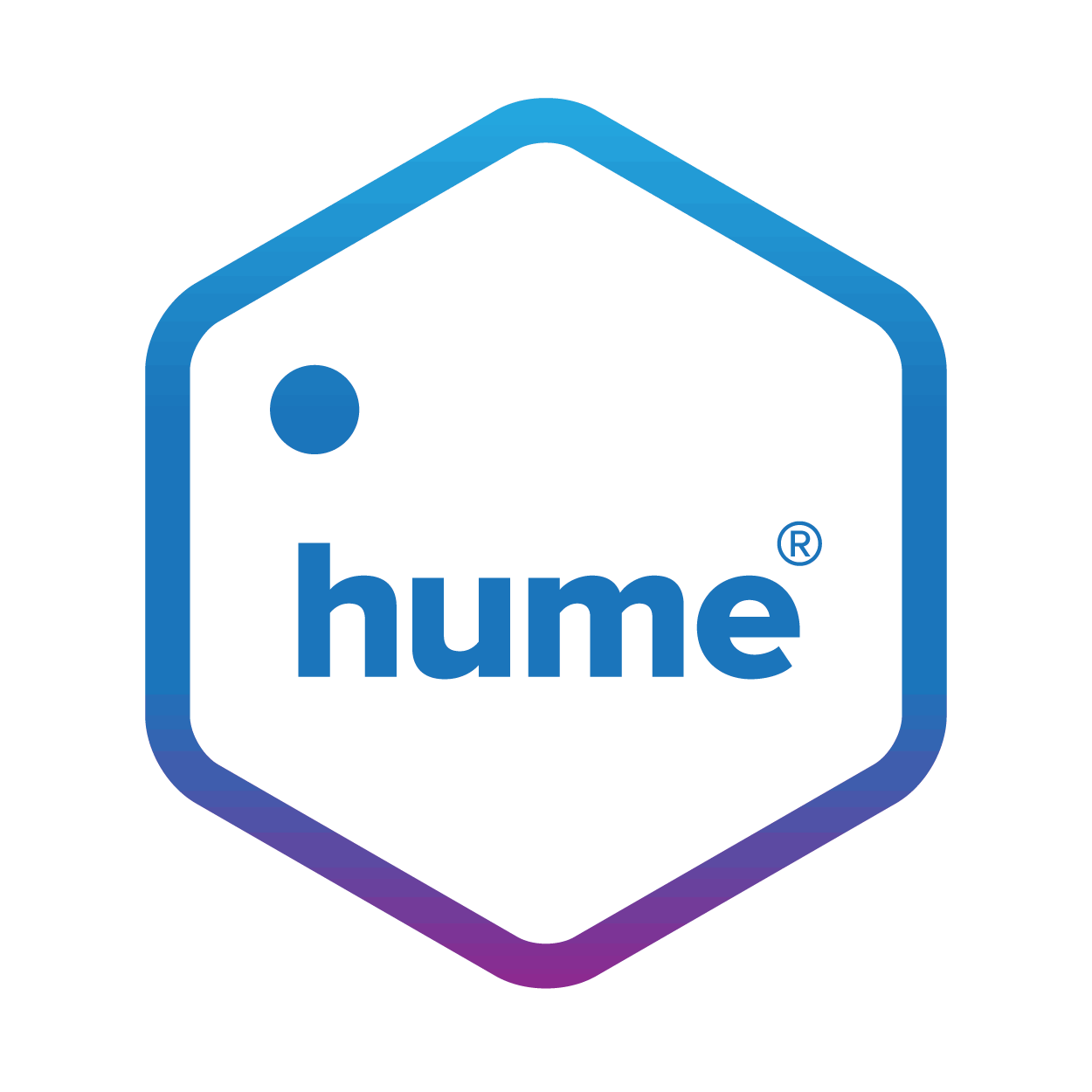Description

GlossAi

Hume
Comprehensive Overview: GlossAi vs Hume
GlossAi
a) Primary Functions and Target Markets:
Functions: GlossAi specializes in AI-powered content creation and management tools. These tools leverage artificial intelligence to automate and enhance various aspects of content production, including video creation, content editing, and social media management. The core functions typically include:
- Automated Video Editing: Uses AI to edit and produce professional-quality videos.
- Content Insights: Provides analytics and insights into the performance of content across platforms.
- Multi-language Support: Offers translation and localization services to reach global audiences.
- Social Media Management: Automates the scheduling and posting of content across different social media channels.
Target Markets: GlossAi primarily targets:
- Content Creators: Individual creators and influencers looking to streamline content production and enhance video quality.
- Marketing Agencies: Agencies that require efficient tools to manage content for multiple clients.
- Small to Medium Enterprises (SMEs): Businesses aiming to improve their digital marketing strategies without large teams.
- Education Sector: Institutions that benefit from automated content creation for educational material.
b) Market Share and User Base:
GlossAi is one of the emerging players in the AI content creation space. While precise market share figures may not be publicly available, it is positioned as a competitive option in the video editing and content automation segment. Its user base is growing steadily, particularly among small to medium-sized businesses and individual content creators who value cost-effective and time-saving tools.
Hume
a) Primary Functions and Target Markets:
Functions: Hume is typically recognized for its emotional intelligence AI software. This product uses machine learning algorithms to analyze human emotions, providing insights that aid in various applications such as customer service, employee engagement, and mental health assessments. Key functions include:
- Emotion Recognition: Uses AI to detect and analyze human emotions from facial expressions, voice tones, and text.
- Feedback Analytics: Gathers and interprets feedback to enhance user experience and engagement.
- Sentiment Analysis: Provides comprehensive sentiment analysis for different types of content.
- Psychological Assessment: Offers tools for mental health professionals to better understand patient emotions and behaviors.
Target Markets: Hume primarily targets:
- Customer Service: Enterprises seeking to improve customer interactions through emotional insights.
- Healthcare: Facilities that use emotional data for patient care and therapy.
- Human Resources: Companies looking to enhance employee engagement and satisfaction.
- Marketing Analytics: Agencies interested in understanding consumer emotions for better targeting.
b) Market Share and User Base:
Hume occupies a niche but growing segment of the AI market focused on emotional intelligence. While not as widespread as broader AI applications, it has a dedicated user base in industries where understanding emotions is critical, such as healthcare and customer service.
c) Key Differentiating Factors Between GlossAi and Hume:
- Core Focus: GlossAi is primarily focused on automating content creation, particularly video and social media content, whereas Hume is centered on emotional intelligence and understanding human emotions.
- Applications: GlossAi serves creative industries, marketing, and education, emphasizing efficiency in content creation. Hume targets industries requiring emotional insights, such as customer service and healthcare.
- Technology: GlossAi's technologies are built around enhancing and automating multimedia content, while Hume uses AI to perceive and understand human emotional data.
- User Experience: Users of GlossAi benefit from streamlined content management processes, while Hume users gain valuable emotional insights to improve human interactions and decision-making.
These products differentiate themselves by catering to different aspects of AI utility, one focusing on content automation and the other on emotional intelligence, thus appealing to distinct user needs and industry demands.
Contact Info

Year founded :
2021
Not Available
Not Available
Israel
http://www.linkedin.com/company/glossai

Year founded :
2018
Not Available
Not Available
United Kingdom
Not Available
Feature Similarity Breakdown: GlossAi, Hume
As of my last update, I don't have specific information on products named "GlossAi" and "Hume." However, I can provide a general framework for how you might break down feature similarities, compare user interfaces, and identify unique features between two hypothetical AI-based products. If these refer to AI tools for text or multimedia processing with elements in common, here's how you would typically approach such a comparison:
a) Core Features in Common
-
Natural Language Processing (NLP):
- Both may employ NLP for understanding and generating human language.
-
Machine Learning Algorithms:
- Utilization of machine learning for data analysis and predictions.
-
Analytics and Reporting:
- Provision of insights and detailed reports based on input data.
-
API Integrations:
- Capability to connect with other software via APIs for enhanced functionality.
-
Data Management:
- Tools for data input, storage, and preprocessing.
b) User Interface Comparison
-
Design and Navigation:
- Assess the aesthetic design, intuitiveness, and ease of navigation.
- Consider elements like dashboard layout, button placement, and color schemes.
-
User Experience (UX):
- Evaluate the simplicity of accessing core functions and performing tasks.
- Consider how user-friendly and accessible each interface is.
-
Customization Options:
- Check for the availability of customizable dashboards or themes.
-
Onboarding and Help Systems:
- Compare how each platform guides new users and supports them with help documentation or tutorials.
c) Unique Features
-
GlossAi Unique Features:
- (Hypothetical Example Feature): Specialized tools for enhancing academic text comprehension and summarization.
- Advanced capabilities in language specific to niche subjects or professional jargon.
-
Hume Unique Features:
- (Hypothetical Example Feature): Superior emotional analysis or sentiment tracking in real-time communication.
- Automated sentiment tagging in large-scale media inputs.
Always remember that actual product features can only be accurately compared by consulting their latest official documentation, user reviews, and potentially through personal product trials.
Features

Not Available

Not Available
Best Fit Use Cases: GlossAi, Hume
GlossAi and Hume are tools that cater to specific needs in content creation and sentiment analysis, respectively. Let's delve into their best fit use cases:
GlossAi
a) Best for Businesses or Projects:
- Content Creation and Marketing: GlossAi excels in generating content from existing media assets. Companies that heavily rely on media content, such as marketing agencies, social media influencers, and news organizations, can benefit from its capabilities to efficiently create engaging content.
- Educational Institutions and E-Learning: Educational platforms and institutions that produce a lot of video or audio content can use GlossAi to generate summaries, transcriptions, or even repurpose lectures into different formats for accessibility and better learning experiences.
- Event and Conference Organizers: These organizations can utilize GlossAi to turn recorded sessions into highlight reels, summaries, or promotional content to increase engagement and reach.
b) Industry Verticals and Company Sizes:
- Media and Entertainment: Companies in these large-scale industries can use GlossAi for scalable content production and distribution.
- SMBs and Startups: Small to medium-sized businesses, especially in tech and education, can leverage this tool to maximize their content output with limited resources.
Hume
b) Preferred Scenarios:
- Customer Experience and Support: Businesses with large customer support teams or that analyze feedback can use Hume to gauge customer sentiments effectively and adapt strategies based on this analysis.
- Market Research and Social Listening: Companies conducting market research or involved in brand monitoring can use Hume to analyze sentiment in consumer opinions, reviews, or social media to understand public perception.
- Human Resources and Employee Welfare: Organizations focusing on employee experience can apply Hume to analyze employee feedback, engagement surveys, and internal communications to enhance workplace culture and morale.
d) Industry Verticals and Company Sizes:
- Retail and E-commerce: These sectors can apply sentiment analysis to understand customer reviews and social media chatter, significantly impacting customer retention strategies.
- Large Enterprises and Corporations: Larger companies with significant customer interactions or workforce can benefit from Hume to streamline their sentiment analysis across departments or on a global scale.
Conclusion
GlossAi is best suited for businesses focused on maximizing media content creation and distribution, while Hume excels in scenarios that require rich sentiment analysis for customer, market, or employee insights. Together, these tools cater to a wide range of industries from media and education to retail and corporate enterprises, addressing the needs of both small businesses and large corporations.
Pricing

Pricing Not Available

Pricing Not Available
Metrics History
Metrics History
Comparing teamSize across companies
Conclusion & Final Verdict: GlossAi vs Hume
To provide a comprehensive conclusion and final verdict on GlossAi and Hume, it's important to evaluate these products based on key factors such as features, usability, support, pricing, and overall value. Here's an overview based on these considerations:
Best Overall Value
GlossAi vs Hume: The best overall value depends on the specific needs and priorities of the user. If your focus is on comprehensive AI-driven content curation and automation, GlossAi may provide better value due to its advanced AI features and robust customization options. On the other hand, if you're seeking real-time emotional analysis and sentiment tracking, Hume might be more attractive and valuable due to its sophisticated sentiment analysis tools.
Pros and Cons
GlossAi
Pros:
- Offers advanced AI tools for content creation and automation.
- Highly customizable and adaptable to various industries.
- Helps in streamlining content processes with ease.
Cons:
- May have a steeper learning curve for users unfamiliar with AI tools.
- Costs could be higher, especially for premium features or large-scale use.
Hume
Pros:
- Excels in real-time sentiment analysis and emotional tracking.
- User-friendly interface, often appreciated for ease of use.
- Strong focus on human-centric analysis, aiding in nuanced understanding.
Cons:
- May not have as extensive features in content automation compared to GlossAi.
- Could be less effective in industries not focused on customer sentiment.
Recommendations for Users
Choosing between GlossAi and Hume largely depends on the user's specific goals:
-
Opt for GlossAi if:
- Your primary aim is to leverage AI for automating content processes.
- You need a solution that can be extensively customized for various applications.
- You are looking into enhancing content production efficiency across different departments or industries.
-
Opt for Hume if:
- Your main focus is on understanding customer emotions and sentiments in real-time.
- Your organization values straightforward interfaces and human-centric data analysis.
- Sentiment tracking plays a crucial role in your decision-making processes, such as customer service or product development.
Ultimately, evaluate each product by conducting a trial if possible, and assess which aligns better with your organization's operational needs and strategic objectives.
Add to compare
Add similar companies




